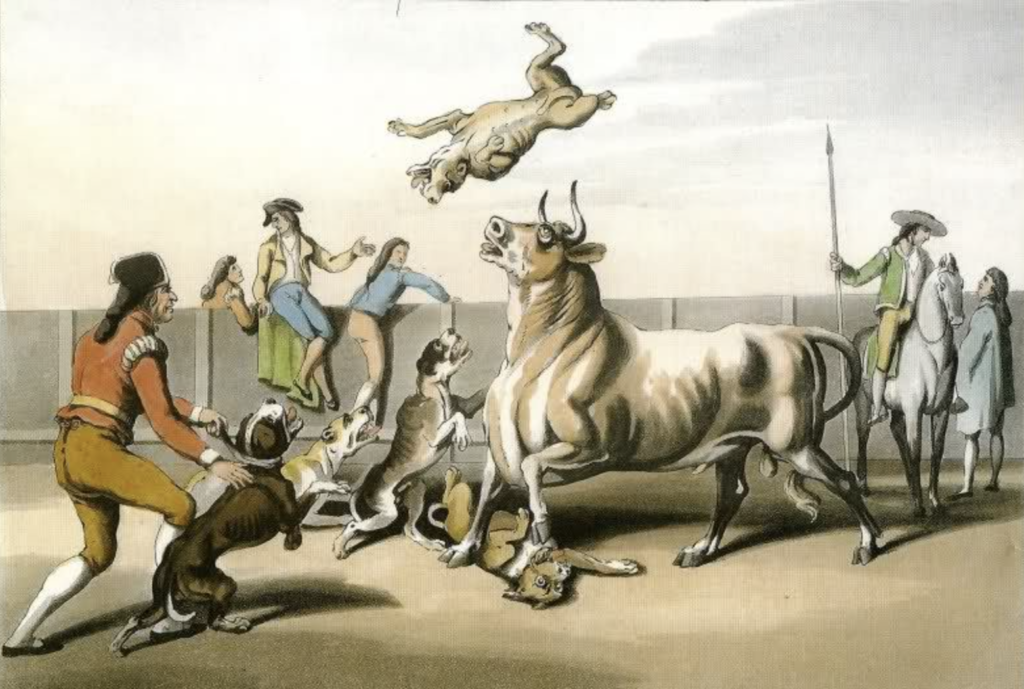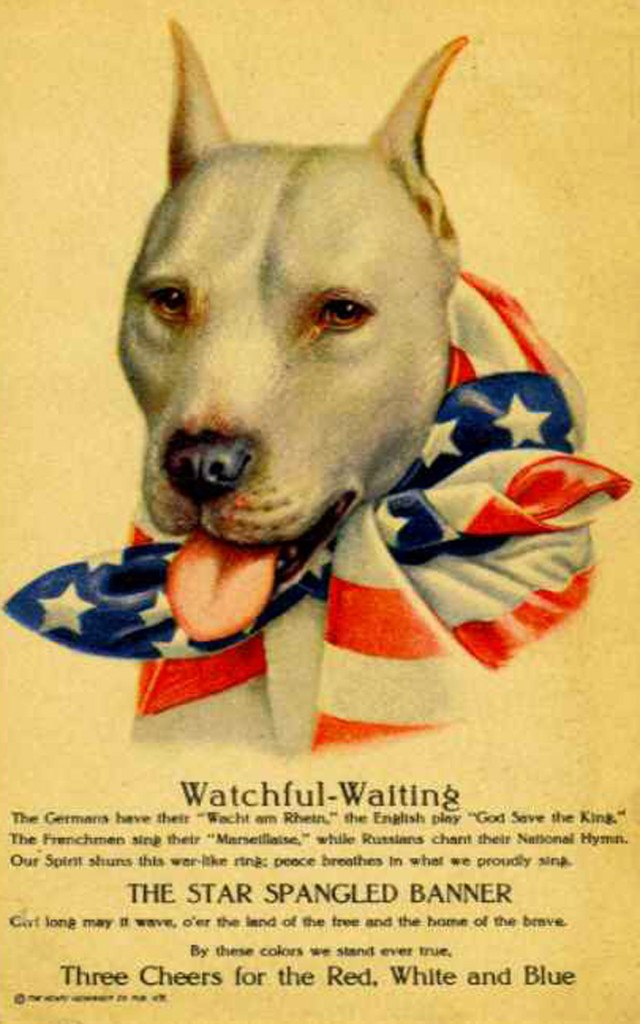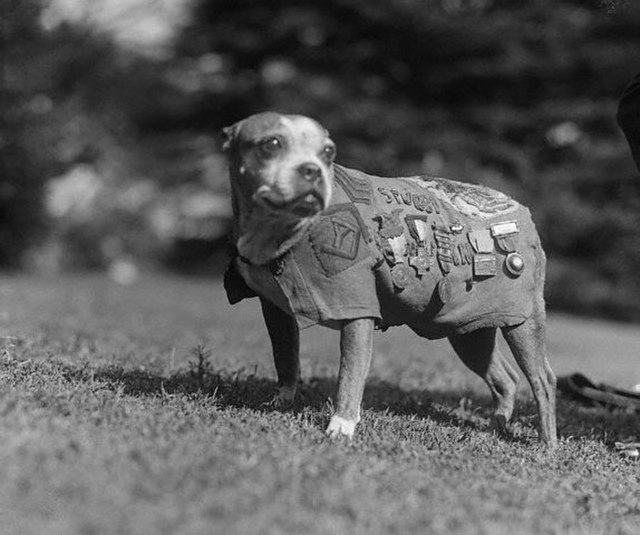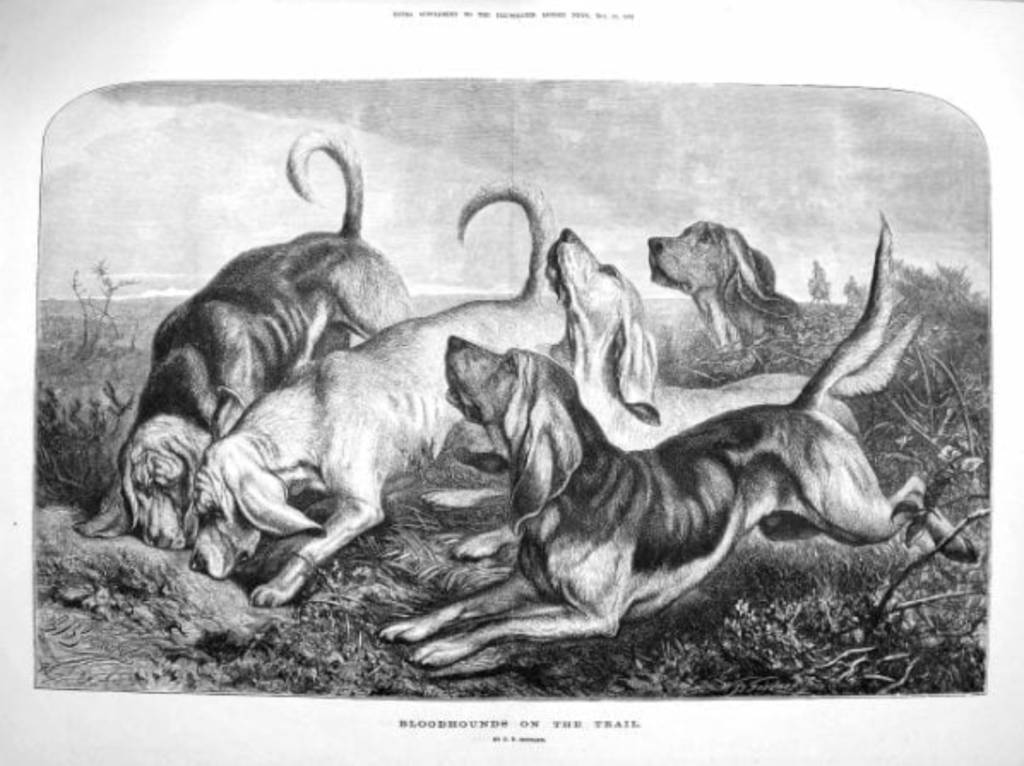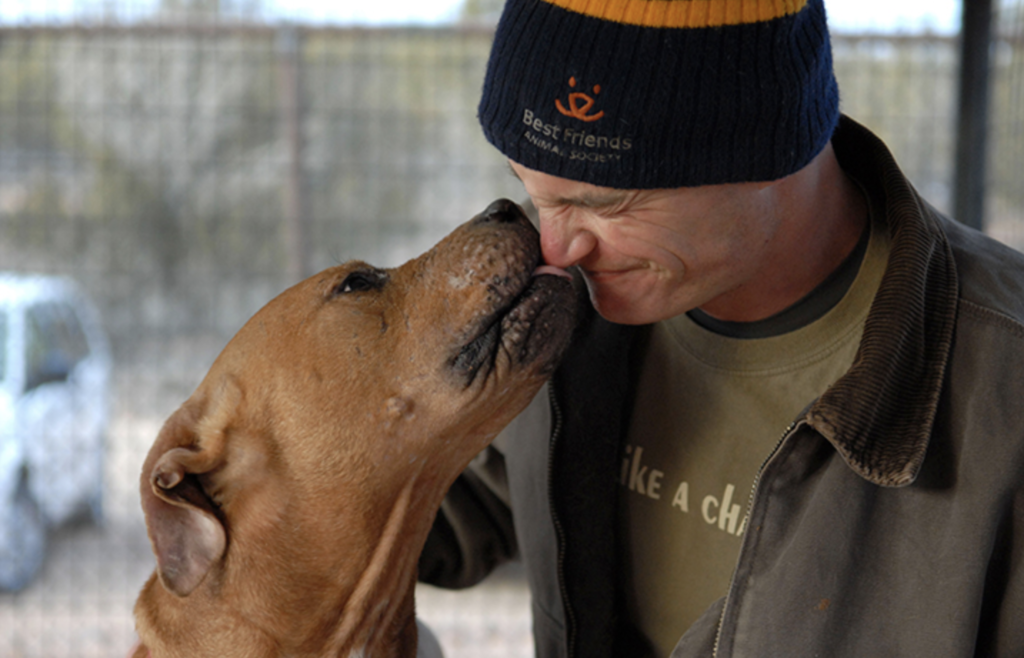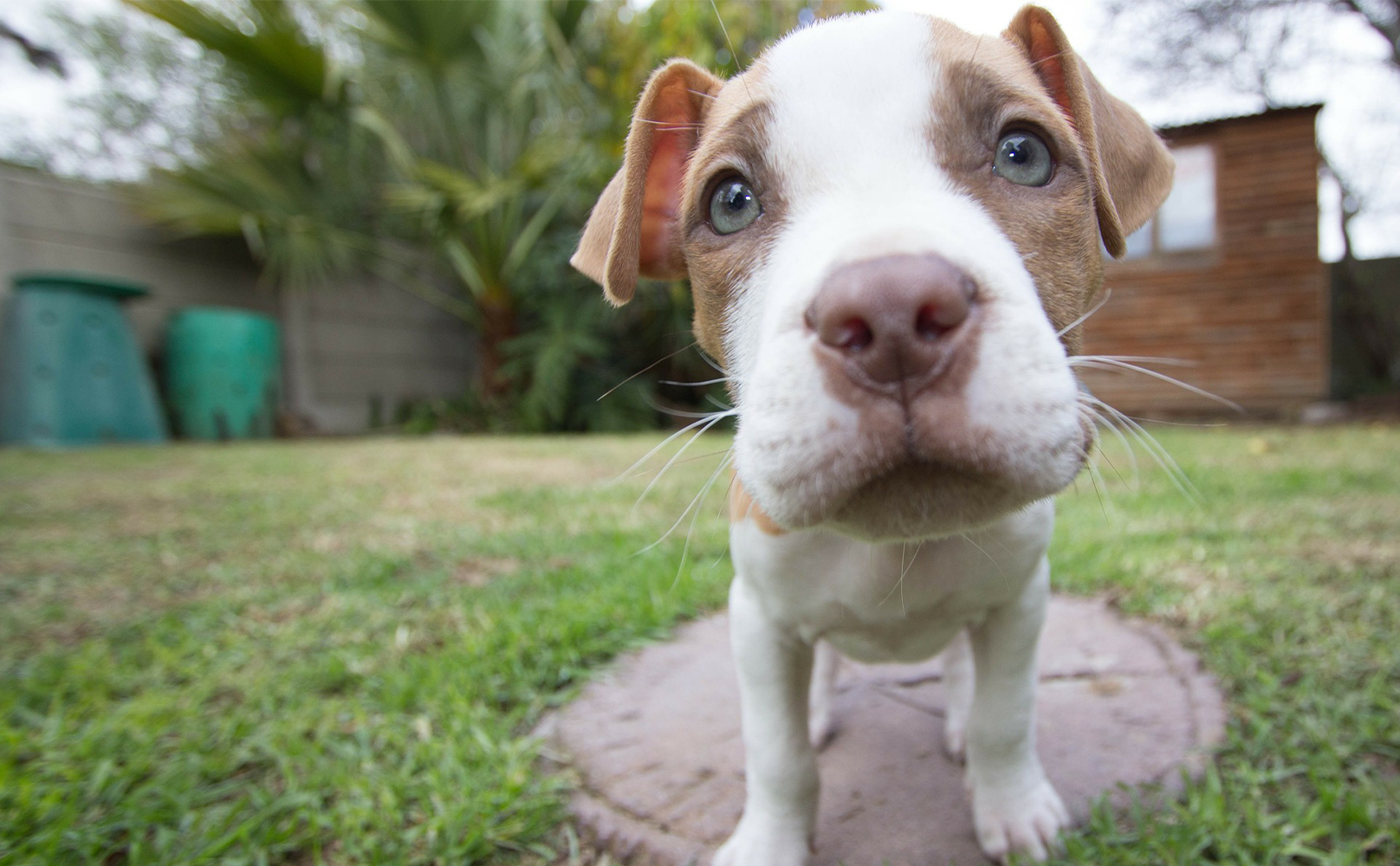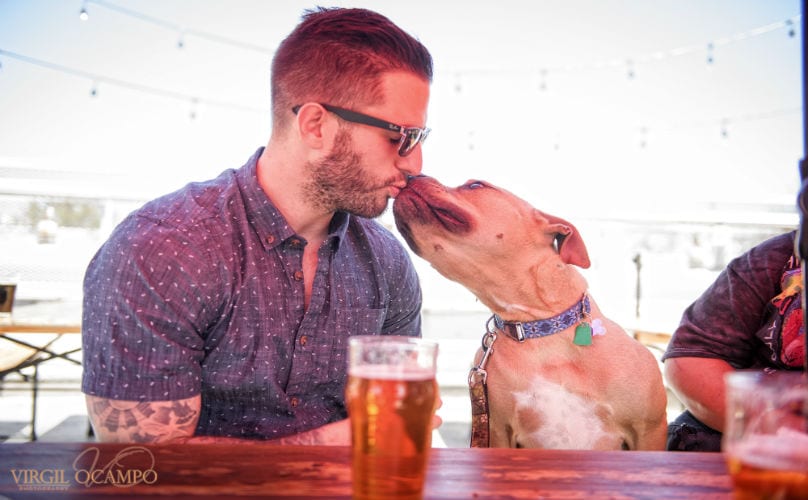Love them or hate them, there’s rarely an in-between when it comes to the never-ending debate of pit bull-type breeds and their place in society. But how exactly did pit bulls go from being “America’s Dog” at the turn of the 20th century to the most vilified breed of the past few decades? We did some digging to find the history of where and how it all went wrong.
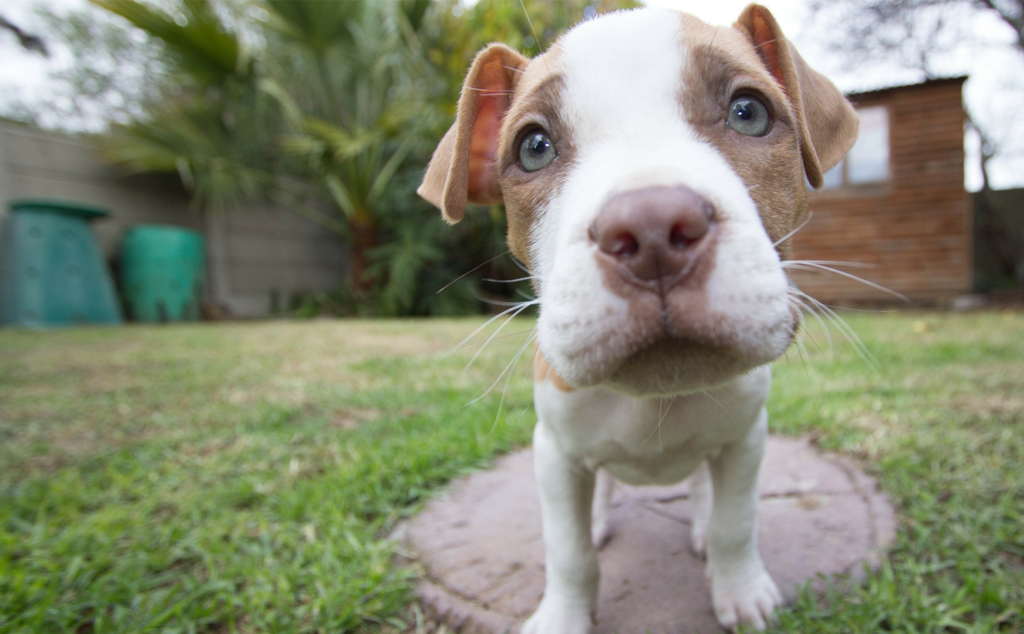

History of the “Pit Bull”
What Are Pit Bulls Exactly?
First, a little backstory and clarification for those who aren’t completely familiar with what “pit bulls” actually are. Pit bulls are not one specific breed, but rather a classification of several breeds1 (Staffordshire terriers, American pit bull terriers, American bullies, American Staffordshire terriers, and sometimes American bulldogs and bull terriers).
These were originally bred from Old English bulldogs, who gained popularity in the 1800s on the British Isles in a blood sport known as “bull baiting“2 (tying a bull to an iron stake that gave him approximately 30 feet to move, and then setting dogs on it in an attempt to immobilize the bull for public entertainment).
Bloodsports were outlawed in 1835 in the UK, so “rat baiting“3 and dog fighting—which were easier to hide from police—became the new sports of popularity. Bulldogs were crossed with terriers and then released into a “pit” to chase and kill rats or fight one another, thus beginning the “pit bull” type of dog.
In the early stages of America, many immigrants brought their treasured pit bull dogs over as part of their families. Though the dogs were bred for fighting sports, they were also incredibly intelligent and friendly. They were used for a variety of jobs4 that included farming, protecting the family from predators, watching the children, and providing companionship. As the popularity of newspapers and media grew throughout the years, many of these dogs were brought to attention for the number of exemplary deeds they performed.
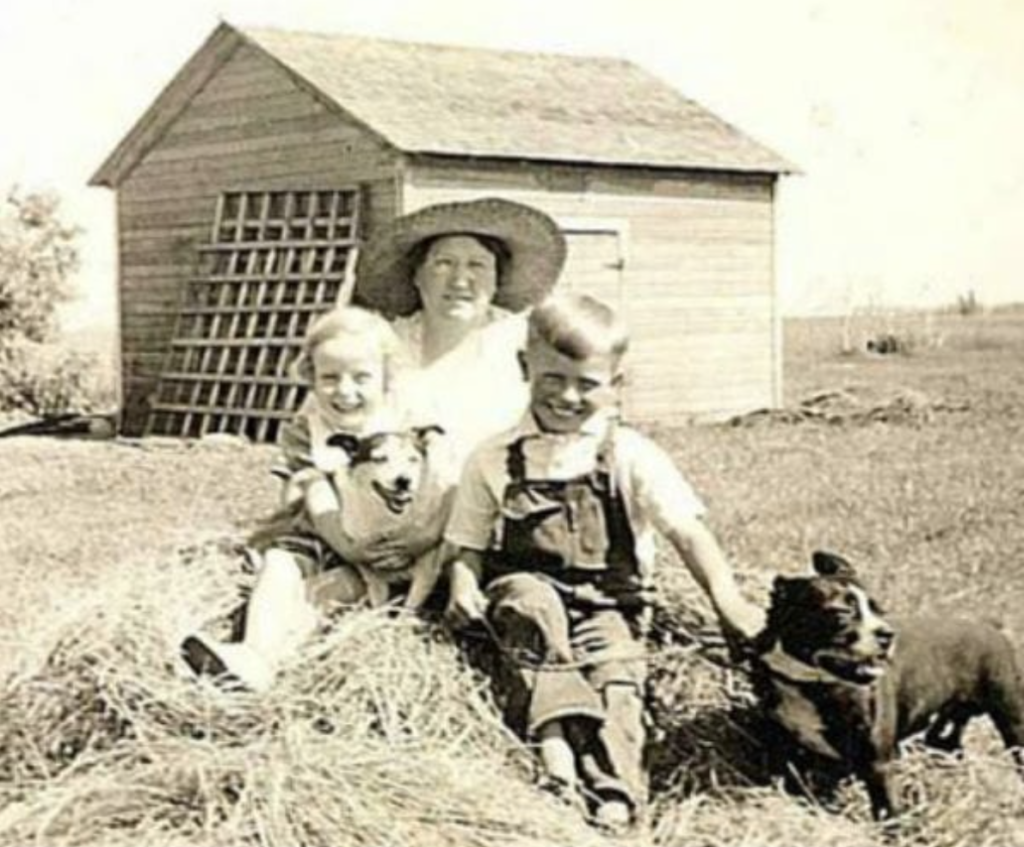

Pitbull Nature and Breeding
How, you might ask, could a dog that was bred to fight aggressively also be kind to humans? The answer is actually in their breeding. Pit bulls that bit handlers were put down and of no use to the owners, so they were bred and trained to be gentle with humans, a trait that most are still well known for to this day.
You may have heard that pit bulls were known as “nanny dogs,” watching children while the families were out working in the fields or otherwise not present. Many groups and media outlets have reported on this phenomenon, while others have tried to dispel it as a myth.
Truthfully, there is no credible source to support either of those statements (and you should never leave small children unsupervised with any breed of dog). But one thing is for certain: there are more than a few vintage photographs5 depicting pit bulls with children that show us they were popular family pets and trusted around kids (at least for as long as one of those old-timey photographs took to take!).
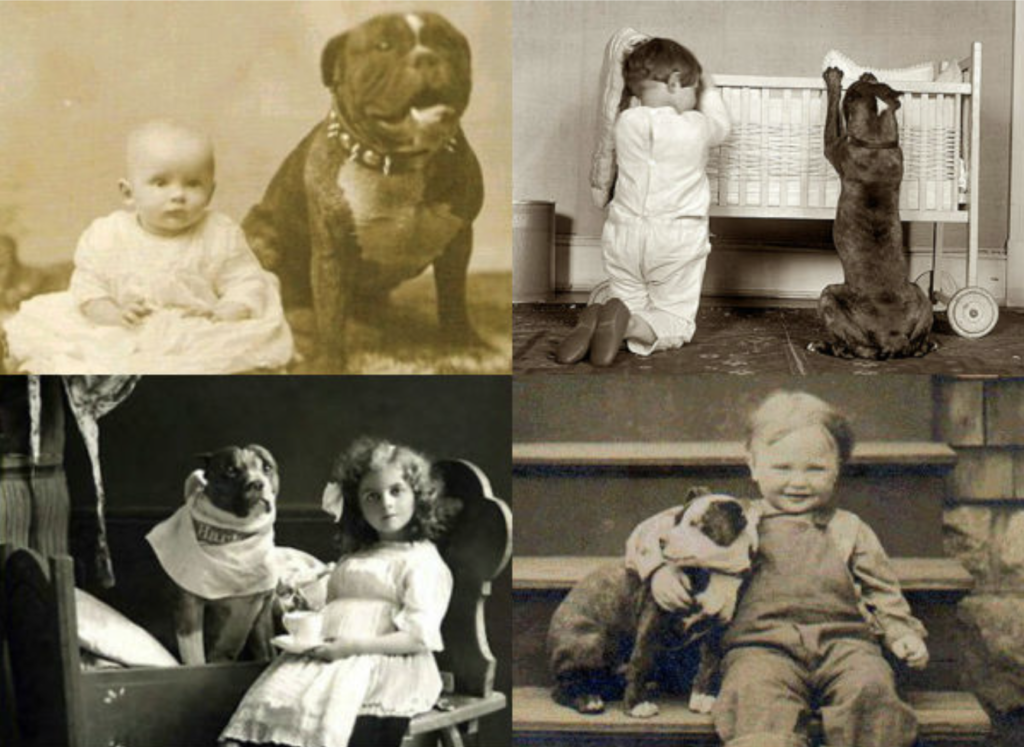

Famous Pit Bulls in History
What is documented, however, is that there have been a number of notable figures throughout history that were avid pit bull owners and supporters. Some of these people include: Theodore Roosevelt, Helen Keller, Thomas Edison, Laura Ingalls Wilder, Fred Astaire, and Humphrey Bogart, to name a few.
Though some believe that Helen Keller’s dog was actually a large Boston terrier, Bostons were also bred to fight in the ring and considered to be “pit bulls” at that time. She was a dog lover and had several breeds in her lifetime, including mastiffs and spaniels, but wrote in her autobiography The Story of My Life:6
“Whenever it is possible, my dog accompanies me on a walk or ride or sail. I have had many dog friends—huge mastiffs, soft-eyed spaniels, wood-wise setters and honest, homely bull terriers. At present the lord of my affections is one of these bull terriers. He has a long pedigree, a crooked tail and the drollest ‘phiz’ in dogdom. My dog friends seem to understand my limitations, and always keep close beside me when I am alone. I love their affectionate ways and the eloquent wag of their tails.”
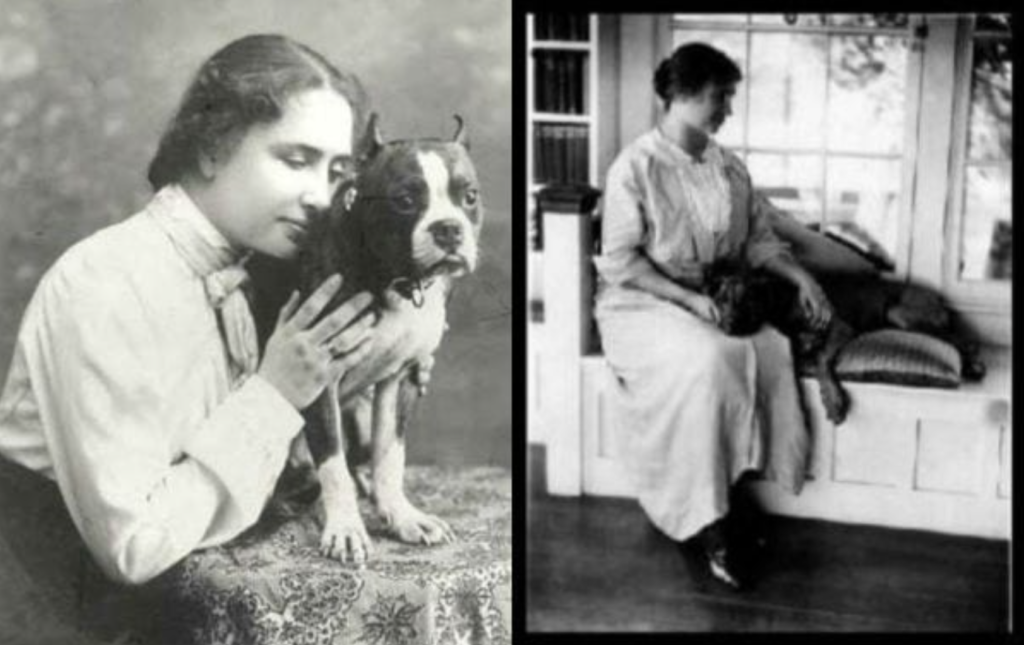

There have been a number of pit bulls that gained fame throughout the 20th Century when they were still lauded as American heroes. One of the earliest of these was Bud,7 a dog who accompanied his owner Horatio Nelson Jackson on the first cross-country road trip in 1903.
Jackson and his traveling companion found Bud about halfway through their trip, and he received almost as much attention as his new owner. Bud’s goggles8 are still on display at the National Smithsonian today, and he became the face of The Auto Era in advertising.
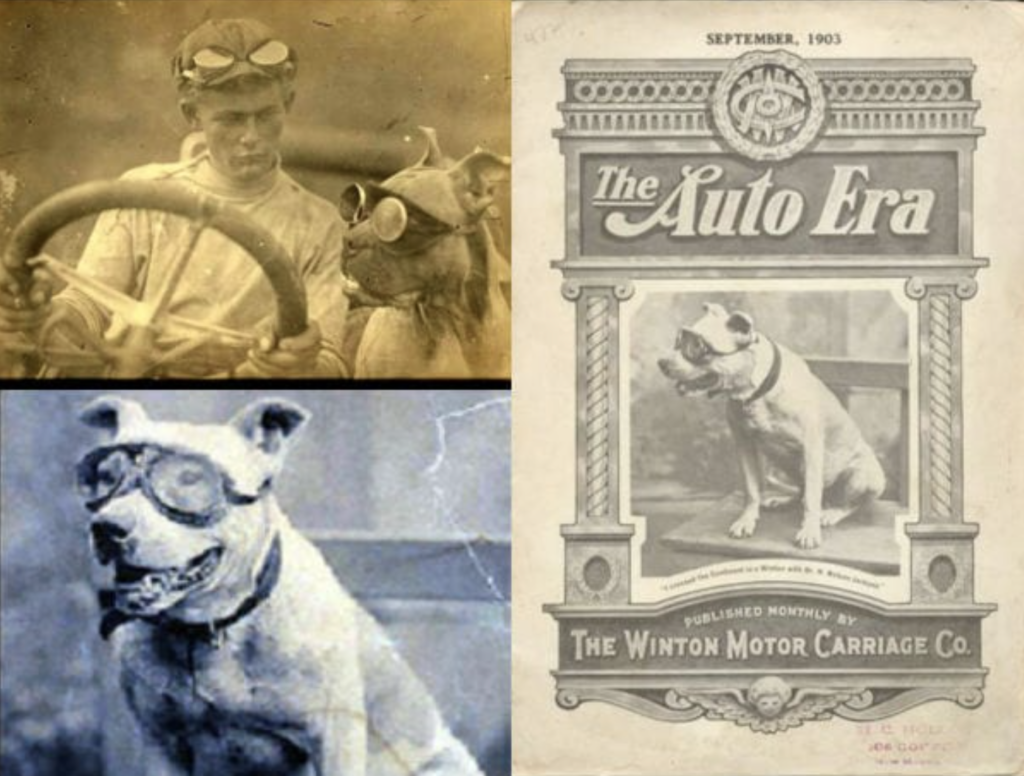

During WWI and WWII, Pit Bulls were used in advertising as a national mascot.9 These dogs were so loved that America made them their sign of fearlessness and protection (and in some early ads, neutrality). A popular ad included the pit bull dressed as an American military symbol, with breeds like German mastiffs and French bulldogs representing other countries.
In fact, pit bulls were some of the first dogs used in American wartime. Sergeant Stubby is one of the most well-known war dogs. Originally a stray with a “stubbed” tail found near an Army training camp at Yale, Stubby was taken in and trained to respond to bugle calls, march with troops, and even salute fellow soldiers. His owner smuggled him overseas to fight in WWI, where he served 18 months on the frontlines in 17 battles and 4 different campaigns.
Related Article: This Brave, Stubby-Tailed Pit Bull Was America’s First War Dog
Among the countless stories of heroic acts he performed, Stubby was known for distinguishing between American soldiers and their enemies when getting his comrades help, carrying messages under fire, and detecting incoming attacks of mustard gas and alerting his humans. He even sniffed out a German spy, bit him on the butt, and held on until help arrived. What a dog!
Stubby is just one example of the many other pit bull types10 dating back to the Civil War and beyond who served their country, just as Bud is only one of the prominent pit bull types in the history of advertising and entertainment during the early 20th century.
And who could forget one of the most famous pit bulls of all time—Petey from The Little Rascals! “Pete the Pup” was originally played by a show biz dog named Pal11 (and later his offspring, not-so-ironically named Pete), who was also cast as the live version of cartoon Buster Brown’s dog Tige (yet another popular pittie in the media).
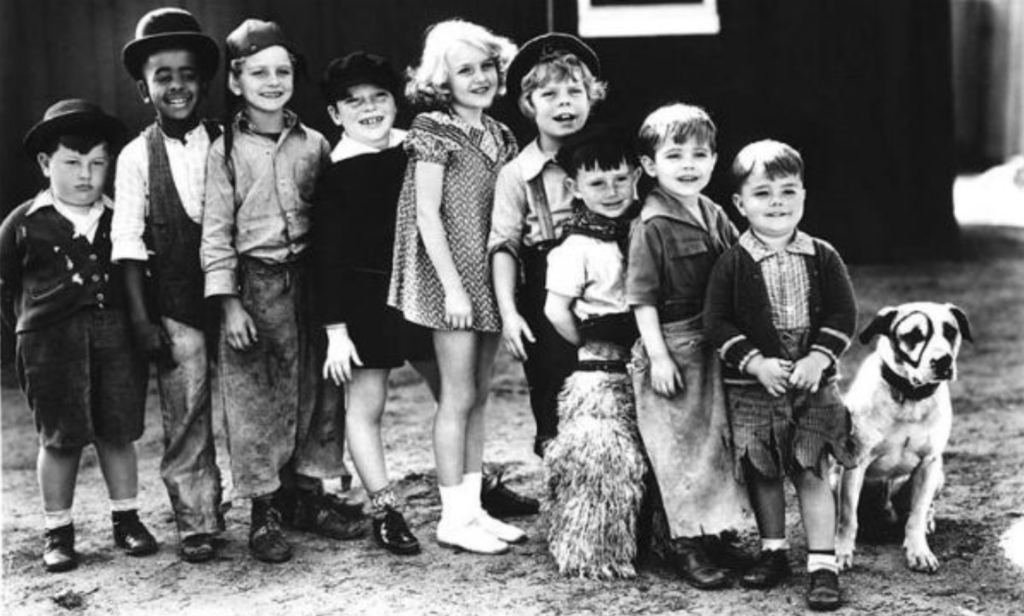

Shift in Attitudes Towards Pit Bulls
So with all of these stellar examples of beloved and well-mannered pit bulls in history, where did it all start to go wrong?
In the 1960s, ’70s, and particularly ’80s, dog fighting began to see a resurgence.12 As people saw more of these large dogs in spiked collars on street corners, a natural fear evolved. In conjunction with fighting, it was not uncommon for owners of these dogs to be abusive and encourage aggressive behaviors to boost their intimidating image.
They also took to breeding their own dogs outside of American Kennel Club and American Dog Breeding Association regulations, leading to an overpopulation of pit bull types. These things still take place today, despite the outlawing of all dog fighting in 1978, and continue to contribute to the negative image of the pit bull.
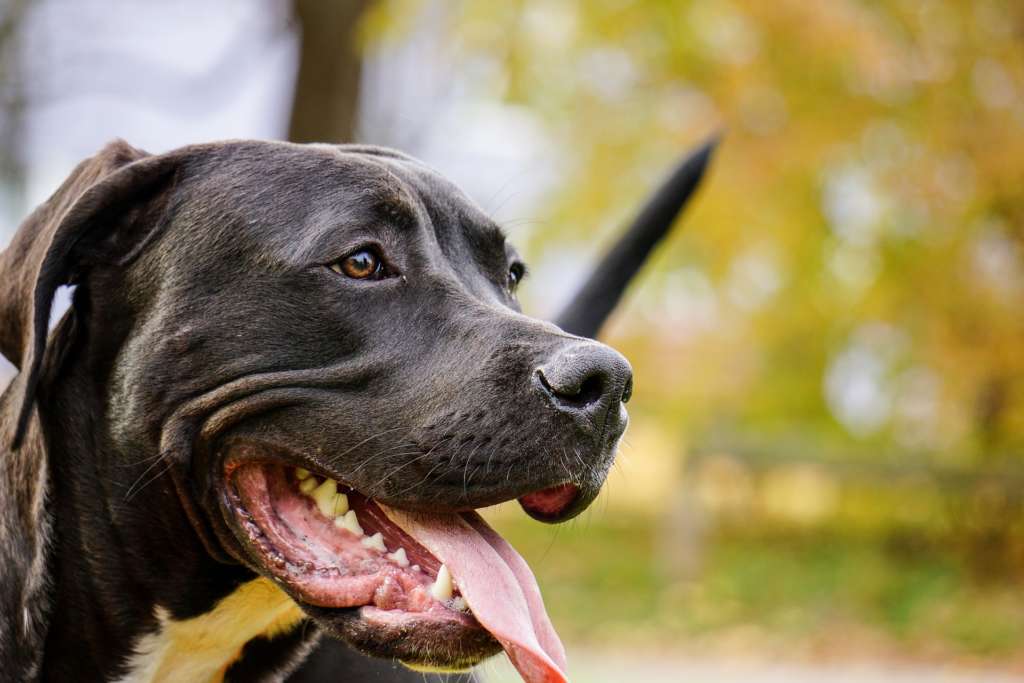

What many saw as the definitive turning point in the media protrayal and demonization of these breeds was the 1987 Time Magazine cover story entitled “The Pit Bull Friend and Killer.”13 The cover showed a pit bull-type dog with teeth bared, and the story itself leaned toward statistics that portrayed the breeds in an unfavorable light.
This was also around the same time that breed specific legislation14 began to take hold. (The first recorded city15 to pass a breed specific law was Hollywood, FL, in 1980.)
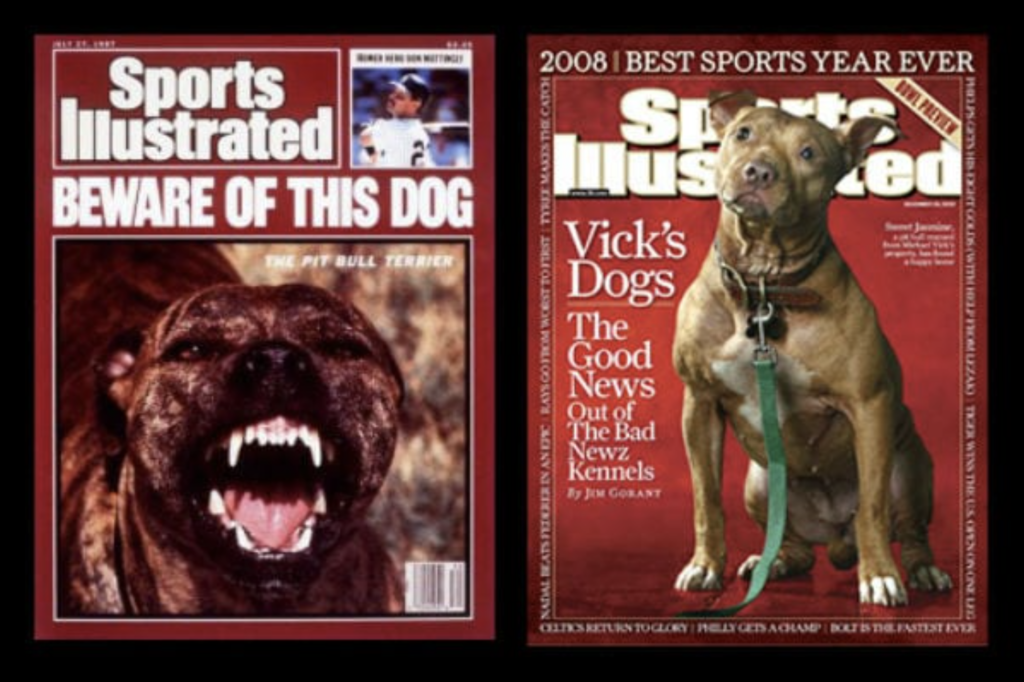

Pit bulls are hardly the first dog to be feared.16 As evidenced above, they were long held as an American favorite, while breeds like Newfoundlands, doberman pinschers, German shepherds, rottweilers, and northern breeds such as huskies and malamutes were stigmatized.
In fact, the bloodhound was one of the first to receive this treatment. In the late 19th to early 20th century, bloodhounds were used to track down escaped slaves and criminals. Many vaudeville productions of Uncle Tom’s Cabin17 portrayed them as vicious, blood-thirsty beasts, and they showed up frequently in the media as newspapers gained more popularity after the Civil War. The media has long been sensationalizing such stories in an effort to gain readership, but it has been the dogs who have suffered the results.
Pit Bull Reputation Today
Unfortunately, there are a few reasons as to why the negative image of pit bull-types has stuck around for longer than the rest. One is that they are still frequently associated with sordid individuals who overbreed them and use them in fighting rings, as evidenced in the high-profile case18 of football player Michael Vick.
Another is that they are the most reported breed involved in domestic disputes because of their notoriety, and the current target of most breed specific legislation laws. You don’t read too often about a Labrador biting anyone, but you can be sure that it happens because any dog has the capacity to do so under the wrong circumstances. Those headlines simply don’t perform as well.
The aforementioned statistics involving breeding and cruelty play a huge role in the public perception and reported incidents. While pit bull-type dogs get the most press about “attacks,” they consistently rank among the least aggressive breeds in temperament tests.19
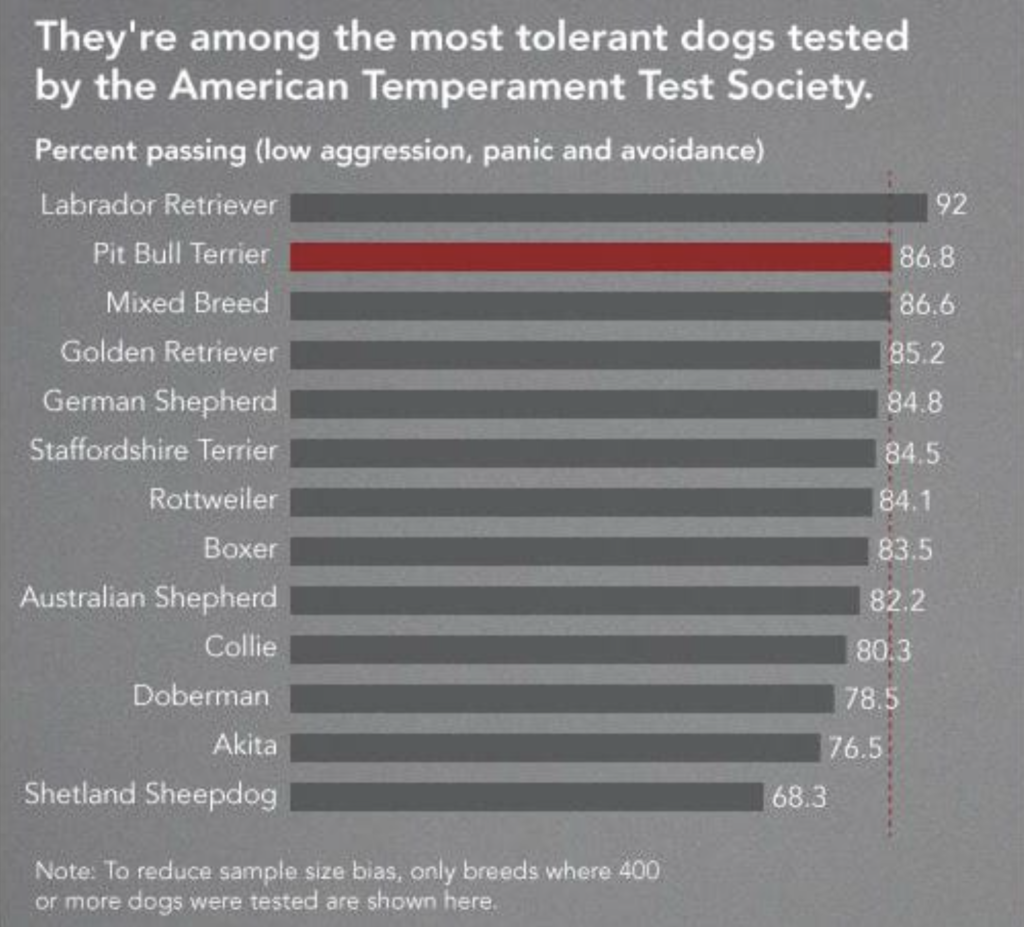

The Pacific Standard magazine had some very interesting statistics and opinions about dog bites to report in their 2014 article “The Tragedy of America’s Dog.”20 The following excerpt highlights that compared to the number of estimated pit bull-types vs. bites reported, pit bulls were actually on the low end of those to be considered dangerous.
“…Between 1965 and 2001, there have been 60 lethal dog-attacks in the United States involving a Pit Bull. Compared to most breeds, that figure is indeed quite high. There were only 14 lethal attacks involving Dobermans, for instance. But taking into account the overall populations of each breed measured, the rate of aggression among Pit Bulls is comparatively quite normal. Even low. During that 36-year period, only 0.0012 percent of the estimated Pit Bull population was involved in a fatal attack. Compare that to the purebred Chow Chow, which has a fatal-attack rate of 0.005 percent, and consistently ranks as the least child-friendly dog breed on the market. Why don’t media reports of attacks involving Chows eclipse those involving Pit Bulls? Because there are only 240,000 registered Chow Chows currently residing in the United States. And frankly, the broad-skulled, wide-mouthed Pit Bull makes for a more convincing monster than the comically puffy Chow.”
Thankfully, more and more people are getting on board with the fight for pit bulls’ rights. Though a horrible atrocity, the Michael Vick case in 2007 did wonders in terms of treatment for rescued fighting dogs. Previously deemed unable to be rehabilitated, several groups, like Best Friends Animal Society and Bad Rap lobbied to take a chance to work with them. Most went on to live peacefully in homes with other pets and children. (If you haven’t seen The Champions, it’s a must-watch!)
Since then, pit bulls have gotten more positive attention, because if dogs who had been abused and trained to fight could be rehabilitated, imagine the possibilities for the hundreds of thousands more who are simply born to irresponsible breeding, or surrendered because people don’t understand the responsibilities that come with having a dog.
Even Sports Illustrated, whose 1987 article stoked the pandemic fear against pit bulls, reported on the rehabilitation of the Vick dogs21 in 2008 and painted them in a far more positive light (see their apology cover above).
Things are looking up in terms of BSL (breed specific legislation) too! In 2020, Denver, Colorado finally overturned the 30-year ban22 and joined the many other states23 who had already done so.
Many pit bulls are still heroes in the present day, with more training to be service animals and therapy dogs all the time. Search and rescue pit bulls Cheyanne, Dakota, and Tahoe24 were involved in missions for 9/11 at the World Trade Center and the Pentagon, the 2003 shuttle disaster for NASA, the Laci Peterson investigation, and many other high-profile cases, in addition to being certified therapy dogs and working in educational groups to teach people about dogs. There’s an increasing number of pit bull types being rescued and trained to work on police forces.
So many pit bulls are becoming certified to visit hospitals and provide comfort. They’re highly trainable, sensitive, loving animals, and there really is no end to the things they can accomplish. They just need to be given the chance.
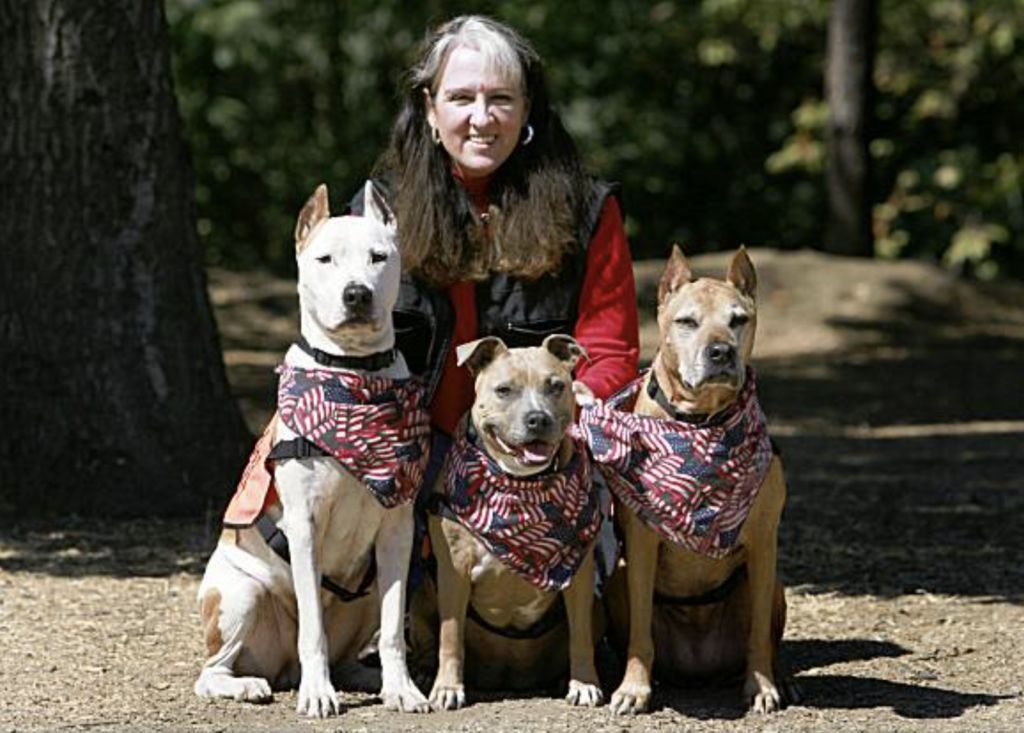

Pit Bulls Are Dogs, Not Statistics
So before you buy into the media and hype, before you let a few mistreated and misunderstood animals who have unfortunately hurt another due to lack of training and socialization (or worse, due to abuse) skew your view, please ask yourself: “Do I know what I’m talking about, have I actually met a pit bull-type and given them a chance, or am I just believing what the media wants me to?”
We all know the agenda, and we all know that many outlets report on what will get them the highest ratings or viewers.
Pit bulls are not a statistic. They are not monsters. They aren’t born into this world wanting to kill. They are an unfortunate victim of a lot of difficult circumstances, and they forgive you. They forgive those that have hurt them, they forgive you for being afraid, and they forgive you for not understanding. Because all they really want is a chance to prove to you what sweet, charming, intelligent, goofy, loving animals they are.
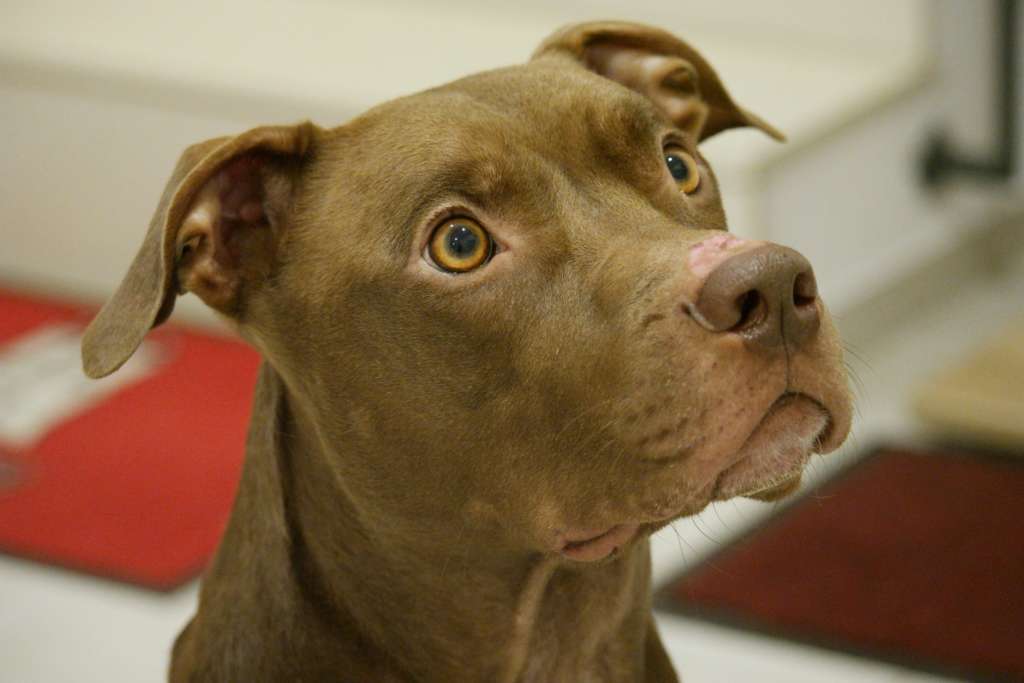

If you haven’t read Bronwen Dickey’s Pit Bull: The Battle Over An American Icon, you should definitely do so immediately—it’s a must-read.
This article comes from Kellie Stevens, a writer and dog trainer in NYC!
Sources
1Augustyn, Adam. “Pit Bull Dog.” Encyclopædia Britannica, Encyclopædia Britannica, Inc., https://www.britannica.com/animal/pit-bull-terrier.
2Alchin, Linda. “Elizabethan Bear & Bull Baiting.” Elizabethan Bear & Bull Baiting, 2017, https://www.elizabethan-era.org.uk/elizabethan-bear-bull-baiting.htm.
3Hosford, Paul. “Fox-Tossing, Goose-Pulling and Rat-Baiting: Bloodsports through the Ages.” TheJournal.ie, 15 Feb. 2014, https://www.thejournal.ie/a-guide-to-outdated-bloodsports-1315270-Feb2014/.
4Mark, Joshua J. “Pets in Colonial America.” World History Encyclopedia, World History Encyclopedia, 28 Jan. 2022, https://www.worldhistory.org/article/1728/pets-in-colonial-america/.
5Grossman, Yonah W. “For Over 100 Years, Pitbulls Were Our Babysitters .” Adopt-A-Pet.com, 2 Mar. 2020, https://www.adoptapet.com/blog/for-over-100-years-pitbulls-were-our-babysitters/.
6Keller, Helen, et al. The Story of My Life. Signet; Reprint edition ed., Mint Editions, 2010.
7“Horatio’s Drive: The Crew.” PBS, Public Broadcasting Service, https://www.pbs.org/kenburns/horatios-drive/the-crew/#TheSidekick.
8“Bud’s Driving Goggles: National Museum of American History.” Smithsonian Institution, https://www.si.edu/es/object/nmah_842942.
9Frank, Megan. “Pit Bull Awareness Month: Once Nation’s Wartime Mascot, Breed Makes Comeback.” PBS WLVT, PBS WLVT, 27 Oct. 2020, https://www.wlvt.org/blogs/montgomery/pit-bull-awareness-month-once-nations-wartime-mascot-breed-makes-comeback/.
10Ojar, Chris. “Famous Pit Bulls.” Welcome To The Pit Stop: The Pit Bull Resource Center, May 2008, https://www.geocities.ws/pitbullstop/famous.html.
11Kelly, Kate. “Pal, The Wonder Dog, And His Offspring Pete.” America Comes Alive, 3 Nov. 2021, https://americacomesalive.com/pal-the-wonder-dog-and-his-offspring-pete/#.V3LRF_krLIU.
12Conan, Neal, and George Dohrmann. “Inside the Underground World of Dog Fighting.” NPR, NPR, 19 July 2007, https://www.npr.org/transcripts/12098479.
13Swift, E.M. “The Pit Bull Friend And Killer – Sports Illustrated Vault.” SI.com, Sports Illustrated Vault | SI.com, 27 July 1987, https://vault.si.com/vault/1987/07/27/the-pit-bull-friend-and-killer-is-the-pit-bull-a-fine-animal-as-its-admirers-claim-or-is-it-a-vicious-dog-unfit-for-society.
14“Breed-Specific Legislation FAQ.” National Canine Research Council, 17 Dec. 2021, https://nationalcanineresearchcouncil.com/public-policy/breed-specific-legislation-faq/.
15Weiss, Linda S. “Breed-Specific Legislation in the United States.” Michigan State University: Animal Legal and Historical Center, 2001, https://www.animallaw.info/article/breed-specific-legislation-united-states.
16Crookes, Del. “A Short History of the ‘Dangerous Dog’ and Why Certain Breeds Are Banned.” BBC News, BBC, 13 Apr. 2016, https://www.bbc.com/news/newsbeat-36033778.
17Lund, Ralph E. “The Century Magazine: Trouping With Uncle Tom (1928).” The Institute for Advanced Technology in the Humanities, http://utc.iath.virginia.edu/onstage/revus/oses33at.html.
18“Case Study: Animal Fighting – Michael Vick.” Animal Legal Defense Fund, 29 Oct. 2020, https://aldf.org/case/case-study-animal-fighting-michael-vick/.
19“Description of the Temperament Test.” American Temperament Test Society, Inc., http://atts.org/tt-test-description/.
20Flanagin, Jake. “The Tragedy of America’s Dog: A Brief History of the Vilification of the Pit Bull.” Pacific Standard, Pacific Standard, 14 June 2017, https://psmag.com/environment/tragedy-americas-dog-pit-bull-75642#.u4itawfj3.
21“What Happened to Michael Vick’s Dogs …” Sports Illustrated, Sports Illustrated, 23 Dec. 2008, https://www.si.com/more-sports/2008/12/23/vick-dogs.
22Helsel, Phil. “Denver Overturns Pit Bull Ban After More Than 30 Years.” NBCNews.com, NBCUniversal News Group, 6 Nov. 2020, https://www.nbcnews.com/news/animal-news/denver-overturns-pit-bull-ban-after-more-30-years-n1246709.
23Wisch, Rebecca F., and Wisch. “Overview of States That Prohibit Breed-Specific Legislation by State Law.” Michigan State University: Animal Legal And Historical Center, 1 Jan. 1970, https://www.animallaw.info/article/overview-states-prohibit-bsl.
24Moody, Shelah. “Nonprofit Is Dedicated to Helping Pit Bulls.” SFGATE, San Francisco Chronicle, 23 Nov. 2008, https://www.sfgate.com/style/article/Nonprofit-is-dedicated-to-helping-pit-bulls-3260467.php.

